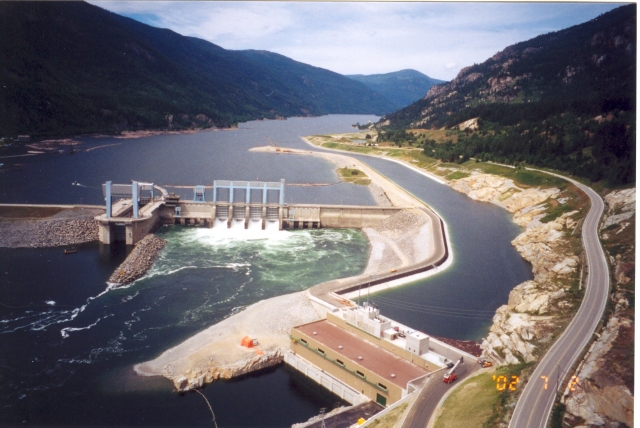Columbia River Treaty to be Re-negotiated
Most residents of the Columbia Basin know something about the Columbia River Treaty. In 1964, Canada and the United States entered into this agreement to construct and operate dams on the upper Columbia River, for flood control and power production to benefit both countries. Both BC and the US have benefited economically, but people and local communities displaced by the floodwaters filling the dams suffered great losses.
The Province of BC passed the Columbia Basin Trust Act in 1995, and then made a lump-sum endowment for the Trust of $295 Million. Of that amount, $250 Million was committed to contructing power projects, and $45 Million was dedicated to a fund to benefit residents of the Columbia Basin — to mitigate the social and economic costs to local communities displaced by the dams that flooded their land. Much of it was prime, productive agricultural land, or prime, productive forest land, or wetlands.
Salmon that spawn in fresh-water streams but live most of their lives in the ocean used to flourish in the Columbia river system, but were lost to the upper Columbia area in 1941 when the US built the Grand Coulee Dam. Since then, we have learned much about how salmon runs contribute nourishment and vitality to surrounding ecosystems.
Some losses were glossed over by the governments of the day — the Sinixt people were not only displaced, but also officially determined in 1953, when the CRT was still in the early conceptual stage, to be “extinct” despite their existing population. The value to First Nations people of lost capacity for hunting, fishing, and gathering was not considered; nor was their loss of sacred places to the flooding reservoirs.
Not only the three Treaty dams in Canada — the Duncan, Mica, and Keenleyside dams — but also the Libby Dam in the US, have flooded Canadian land. The Libby Dam in the US backs water up into Canada for 68 kilometers in the Koocanusa Reservoir.
Under the terms of the Columbia River Treaty, 2024 is the earliest possible date for termination of the treaty; annual flood control is assured until then. To terminate the treaty, either side would be required to give ten year’s written notice. The province of BC decided in March of 2014 that it wanted to continue the Treaty, but to seek improvements within the existing terms. For more details on the terms of the Treaty, go to this link at Wikipedia, or to this information at the CBT website.
The US has been asking for a renegotiation for over two years now, and Canada has finally agreed to appoint a negotiating team. The US has already hinted that it wants to pay less for water storage and flood control by Canada, and for power; on the Canadian side, there have been rumblings about inadequate compensation; scientists will urge greater consideration of environmental mitigation, and for new terms in the treaty to recognize the realities of climate change, which is altering water flows in the Basin, and to address not only flood control, but also flow control for water temperatures cool enough to prevent more harm to fish populations.
The negotiations should be interesting. They may take a long time.

























